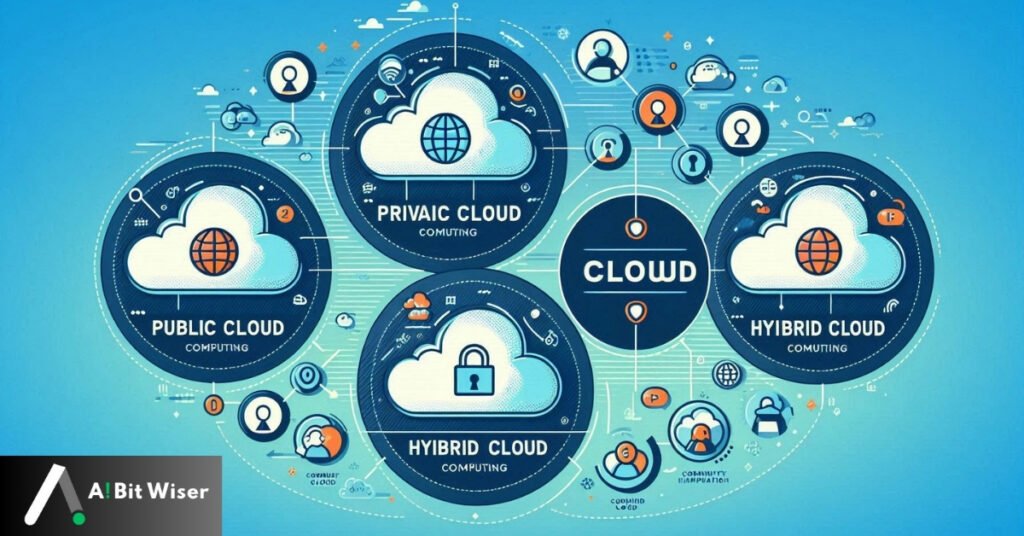Let’s Create Cloud Computing: Build Your Own Cloud Environment

Distributed computing has reformed how organizations and people oversee information, assemble applications, and access assets. From little new businesses to enormous endeavors, everybody is utilizing the force of the cloud to improve adaptability, adaptability, and cost productivity. In any case, imagine a scenario in which you could adopt an additional active strategy and establish your own distributed computing climate.
Let’s Create Cloud Computing, now we’ll walk you through the most common way of setting up a cloud climate, sending applications, and understanding the center parts that make distributed computing so strong. How about we make a plunge and make distributed computing together?
Table of Contents
Understanding Cloud Computing
Before we begin constructing, it’s fundamental to comprehend what distributed computing is and its importance. Distributed computing alludes to the conveyance of registering administrations — like capacity, handling, and systems administration — over the web, generally alluded to as “the cloud.” This model permits clients to access and utilize assets on request without expecting to possess or keep up with actual equipment.
Key Characteristics of Cloud Computing
- On-Demand Self-Service: Clients can get to register assets on a case-by-case basis without requiring human collaboration with specialist organizations.
- Broad Network Access: Administrations are available from any place through the web, utilizing different gadgets like cell phones, tablets, and workstations.
- Resource Pooling: Cloud suppliers pool assets to serve different clients utilizing a multi-occupant model.
- Rapid Elasticity: Assets can be immediately increased or down as indicated by request.
- Measured Service: Cloud frameworks naturally control and upgrade asset utilization by utilizing a metering capacity, considering straightforward asset use and charging.
Key Components of Cloud Computing
To establish a cloud climate, we want to comprehend the three essential cloud administration models:
- Infrastructure as a Service (IaaS): Gives virtualized registering assets over the web. Models incorporate Amazon EC2 and Microsoft Sky Blue.
- Platform as a Service (PaaS): Offers a stage permitting clients to create, run, and oversee applications without managing the foundation. Models incorporate Google Application Motor and Heroku.
- Software as a Service (SaaS): Conveys programming applications over the web on a membership premise. Models incorporate Google Work area and Salesforce.
Setting Up Your Cloud Environment
We should begin by setting up our cloud climate. Here is a bit-by-bit guide:
Step 1: Choosing a Cloud Provider
In the first place, pick a cloud supplier that best meets your requirements. The most well-known choices are:
- Amazon Web Services (AWS): Offers a huge scope of administrations and worldwide reach.
- Microsoft Azure: Incorporated with Microsoft instruments and administrations, extraordinary for undertakings utilizing Microsoft items.
- Google Cloud Platform (GCP): Known for its information examination and AI capacities.
- IBM Cloud: Major areas of strength for offers for cross-breed cloud and endeavor conditions.
Factors to Consider:
- Pricing: Take a gander at the valuing model (pay more only as costs arise, saved occurrences, and so forth) and look at costs.
- Services Offered: Guarantee the supplier offers the administrations you want (e.g., virtual machines, data sets, AI apparatuses).
- Scalability: Survey how well the supplier can scale with your requirements.
- Security and Compliance: Survey the supplier’s safety efforts and consistency with guidelines.
Step 2: Setting Up an Account
Whenever you’ve chosen a supplier, you want to make a record:
- Sign Up: Go to the supplier’s site and pursue a record.
- Verify Your Identity: You might have to give a Visa to character check.
- Navigate the Dashboard: Get to know the cloud supplier’s dashboard. Every supplier offers a one-of-a-kind point of interaction, yet most have comparative functionalities.

Building Your First Cloud Application
Since you have your cloud climate set up, we should construct an essential cloud application.
Step 1: Selecting the Right Cloud Service Model
Conclude whether you want IaaS, PaaS, or SaaS for your undertaking. For this instructional exercise, we’ll utilize IaaS to set up a virtual machine (VM).
Step 2: Deploying a Virtual Machine (VM) or Container
- Choose a Virtual Machine Type:
- Go to your cloud supplier’s VM segment (e.g., AWS EC2, Sky Blue VM, Google Register Motor).
- Pick the VM determinations (central processor, Smash, capacity) because of your requirements.
- Select a working framework (Linux or Windows).
- Launch the VM:
- Design network settings, for example, security gatherings and firewalls.
- Survey and send off the VM.
- Interface with your VM utilizing SSH (for Linux) or RDP (for Windows).
- Set Up a Container (Optional):
- Introduce Docker or one more compartment administration on your VM.
- Pull a Docker picture and run a containerized application.
Step 3: Developing and Deploying Your Application
- Develop Your Application:
- Compose a basic web application utilizing your favored programming language (e.g., Python, Node.js).
- Introduce the important programming and conditions on your VM.
- Deploy Your Application:
- Transfer your application code to the VM.
- Arrange the web server (e.g., Apache, Nginx) to serve your application.
- Test the application to accurately guarantee it’s working.
- Monitor and Scale:
- Utilize the cloud supplier’s observing instruments to watch out for your application’s presentation.
- Increase or down in light of the application’s requirements (adding more VMs or holders depending on the situation).

Advanced Cloud Computing Concepts
As you become more OK with distributed computing, you might need to investigate progressed ideas:
- Cloud-Native Architectures: Spotlight on building applications intended to completely use cloud conditions, like microservices and serverless figuring.
- DevOps in Cloud: Execute ceaseless mix and consistent arrangement (CI/Disc) pipelines utilizing apparatuses like Jenkins, GitHub Activities, or AWS CodePipeline.
- Cloud Security: Comprehend how to get your cloud climate, including information encryption, character and access the executives (IAM), and consistency measures.
Best Practices for Cloud Computing
To guarantee the outcome in your distributed computing attempts, think about these accepted procedures:
- Optimize Performance and Costs: Routinely survey asset use to enhance execution and diminish costs. Utilize cost administration devices given by your cloud supplier.
- Ensure Security: Follow the best security rehearses like customary fixing, major areas of strength for utilizing, and scrambling touchy information.
- Regular Monitoring and Maintenance: Set up alarms and screen your assets to instantly recognize and determine issues.
- Use Automation: Mechanize dreary errands utilizing contents and devices to further develop effectiveness and lessen human mistakes.
Future Trends in Cloud Computing
Remain ahead by understanding the fate of distributed computing:
- Edge Computing: Carrying calculation nearer to information sources to decrease inertness and work on constant handling.
- Multi-Cloud Strategies: Utilizing various cloud suppliers to keep away from sellers secure and further develop overt repetitiveness.
- AI and ML Integration: Expanding utilization of man-made consciousness and AI administrations in cloud conditions for information examination and prescient displaying.
Conclusion
Establishing your own distributed computing climate is an engaging excursion that opens up a universe of opportunities for development and productivity. Whether you’re a designer hoping to convey applications or a business planning to scale tasks, distributed computing offers an adaptable, versatile, and practical arrangement. By following this aid, you can certainly begin constructing your cloud surroundings and make the most of this groundbreaking innovation.
Prepared to get everything rolling? Join a cloud supplier today and start your process in distributed computing. Remember to buy into our blog for additional instructional exercises and updates!
Additional Resources
- AWS Training and Certification: AWS Training
- Microsoft Learn for Azure: Microsoft Learn
- Google Cloud Training: Google Cloud Training
- Online Courses on Cloud Computing: Check out platforms like Coursera, Udemy, and edX for more in-depth courses.
FAQs: Let’s Create Cloud Computing
How do I create my own cloud computing environment?
To establish your own distributed computing climate, follow these means:
- Choose a Cloud Provider: Begin by choosing a cloud supplier that addresses your issues, for example, Amazon Web Administrations (AWS), Microsoft Purplish Blue, Google Cloud Stage (GCP), or IBM Cloud.
- Sign Up for an Account: Make a record with your picked cloud supplier. This frequently includes giving an installment strategy and checking your character.
- Select a Service Model: Conclude whether you need to involve Framework as a Help (IaaS), Stage as a Help (PaaS), or Programming as an Assistance (SaaS) in light of your undertaking prerequisites.
- Deploy Resources: For IaaS, you can send off virtual machines (VMs) or compartments to run applications. For PaaS, you can convey and oversee applications utilizing the cloud stage. SaaS includes utilizing instant applications facilitated on the cloud.
- Develop and Deploy Applications: Compose and send your application code on the cloud assets you’ve set up.
- Monitor and Scale: Utilize the cloud supplier’s apparatuses to screen execution and scale assets up or down depending on the situation.
How is cloud computing created?
Distributed computing is made by utilizing virtualization innovation to give versatile and on-request figuring assets over the web. This is the secret:
- Data Centers: Cloud suppliers keep up with huge server farms outfitted with servers, stockpiling, and systems administration framework.
- Virtualization: This innovation permits cloud suppliers to make virtual forms of actual equipment assets (like servers and capacity), empowering numerous clients to have similar actual assets safely and productively.
- Service Delivery Models: Suppliers offer different help models like IaaS, PaaS, and SaaS to take special care of various necessities — from facilitating foundation to giving total programming arrangements.
- Network Access: Cloud administrations are conveyed over the web, permitting clients to get to them from anywhere with an internet connection.
What is cloud computing?
Distributed computing is the conveyance of different registering administrations — including servers, stockpiling, data sets, systems administration, programming, and investigation — over the web (“the cloud”). Rather than purchasing and keeping up with actual servers or server farms, organizations and people can lease admittance to these assets depending upon the situation of a cloud supplier. Key advantages of distributed computing incorporate expense investment funds, adaptability, adaptability, fiasco recuperation, and far-off availability.
What are the 4 types of cloud computing?
The four primary kinds of distributed computing are:
- Private Cloud: A cloud climate that is solely utilized by one association. It gives more command over information and security, yet normally requires a critical interest in equipment and framework.
- Public Cloud: A cloud climate where administrations are presented over the public web and shared across various associations. This type is overseen by outsider suppliers (like AWS, Sky Blue, or GCP) and is profoundly adaptable and savvy.
- Hybrid Cloud: Joins components of both private and public mists. It permits information and applications to be divided among them, giving more prominent adaptability and improving existing foundations.
- Community Cloud: A cloud climate that is imparted by a few associations to comparable prerequisites and concerns, like security and consistency. It is overseen either inside or by an outsider.
Can I start using cloud computing?
Totally! Anybody can begin utilizing distributed computing, whether you are a singular hoping to have a little application or a business looking to scale your tasks. This is the way you can start:
- Learn the Basics: Begin with primary information about distributed computing and comprehend its different help models (IaaS, PaaS, SaaS) and sending models (public, private, crossover, local area).
- Choose a Cloud Provider: Exploration and select a cloud supplier that lines up with your requirements and financial plan.
- Sign Up and Explore: Make a record with the supplier, and investigate the complementary plans they frequently offer, which permit you to test and learn without forthright expenses.
- Take Online Courses: Many cloud suppliers offer free instructional exercises and confirmation courses that can assist you with acquiring a more profound comprehension of their foundation.
- Start Small: Start with a basic venture, such as conveying a site or making a virtual machine, to get involved insight.
By following these means, you can begin utilizing the force of distributed computing to improve your abilities or change your business tasks.















